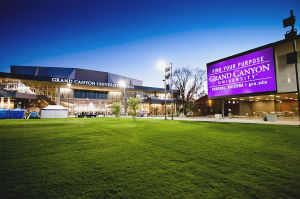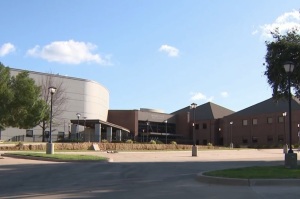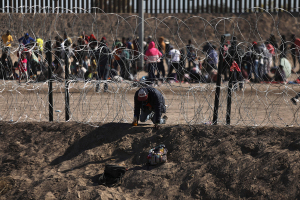Rome: Glimpse Of Eternity In a Mere 2 Days
ROME (AP) - The light splashes liquid gold over marble columns in the Roman Forum and the faded facades of Baroque palaces in the distance. Nearby, a heated dialogue resonates in the hearty Roman accents that infuse everyday interactions with playful theatricality.
I am standing in the center of Rome, amid its absurd profusion of gorgeous monuments, historic sites, religious wonders — and everyday contemporary life.
A man on a scooter drops off dry cleaning next to a 1,900-year-old temple. A woman in extravagantly high heels heads to her office, housed in 17th-century Papal palaces.
This is why Rome, majestic and down-to-earth, has a hold on me like no other city. Every turn down a cobblestone street hides yet another magnificent piece of art and history that feels decadently ignored and singularly mine.
Trying to get in all the sights is virtually impossible — I didn't make it even when I lived here a few years ago for six months. Now that I barely manage a weekend a year, I have developed my own walking itinerary of favorite spots. Here is my personal pick of what to see in Rome if you only have two days. Best of all, every site listed here is free, except for the Vatican Museums (about $20, free the last Sunday of the month, http://www.vatican.va) and the Roman Forum, which includes the Colosseum (about $16, http://www.romaturismo.it/v2/allascopertadiroma/EN/musei08.html).
CAPUT MUNDI: Let's start in the morning at Piazza Venezia, the logistical center of the metropolis that a couple of millennia ago called itself — and for centuries indeed was — caput mundi, the "head of the world."
Climb the grand ramp up the Capitoline Hill to Michelangelo's Piazza del Campidoglio, then walk to the terraces on either side of Rome's town hall. There it is: The heart of the Roman Republic and Empire lies in ruins at your feet, a sweeping vista of muscularly carved arches, columns, statues and basilicas.
Imagine yourself in the power center of the ancient world by walking down the length of the Roman Forum along the Via Sacra, the sacred way. I'm oddly, movingly reminded of this city's breathing history every time I see the faded wreath of fabric flowers lying in front of the Temple of Caesar at the reputed site where his assassinated body was cremated. I circle around the Colosseum, inaugurated in 80 A.D. to a crowd of about 50,000 spectators and for 300 years the site of bloody battles between gladiators and beasts. Then I head back along via dei Fori Imperiali.
On the right are the Imperial Forums, built as the Roman Forum started to be too tight for the growing empire. The most impressive ruins are at the end, as you reach back toward Piazza Venezia. The Mercati Traianei were Rome's mall, with some 150 shops along several floors, and just past them rises the 98-foot Colonna Traiana, a column whose spiraling bas-reliefs depicting Rome's campaigns against eastern European tribes are a masterpiece of Roman sculpture.
I always stop for lunch just across Piazza Venezia, down via del Gesu. When I want to sit down to classics like saltimbocca (thin veal slices rolled with prosciutto and sage), I head to Enoteca Corsi (via del Gesu 87).
If I feel compelled to keep going, I step in any of the compact, family-run grocery stores like the Tiberi brothers', a couple of doors down from the enoteca (Italian for wine shop), for a slice of pizza bianca — chewy, crusty pizza dough — filled with arugula, mozzarella di bufala and prosciutto crudo.
On one visit, after I had been gone for about two years, I had barely crossed the threshold when one of the brothers greeted me with a reproachful, "We're out of pizza bianca, Miss, you should have called us from the plane!"
I usually take my pizza break on the low wall next to the Pantheon (Piazza della Rotonda), marveling at perhaps the best-preserved monument of ancient Rome — this perfectly proportioned, vast dome-topped structure has been a temple for 1,900 years, the last 1,400 as a Christian church.
Armed with ice cream from one of the nearby gelaterie, I amble through the contorted medieval streets, past Renaissance and Baroque palaces, all in the earthy ocher and golden tones of Rome, until I make my way to the most annoyingly tourist-thronged attraction of all, Fontana di Trevi (Piazza di Trevi).
Poor Neptune, sculpted in 1762, had to stand by as Anita Ekberg epically bathed in the large fountain in front of him in Fellini's "La Dolce Vita," and he continues to tolerate the ritual that I can't resist: Tossing a coin in, said to insure a prompt return to Rome. There's more "sweet life" down the street at the inordinately expensive boutiques lining Via dei Condotti — I recently gawked at a golfball-sized sapphire pendant in a Bulgari window. The street ends at the masterpiece of 18th-century theatricality, the volubly shaped Spanish Steps (Piazza di Spagna). Walk up and a few hundred yards along the road, into the Villa Borghese park to the terrace on the Pincio hill, overlooking vast Piazza del Popolo.
It's the best place to watch the sunset, as the red and golden light infuses the umbrella pines, the marble arches and the ornate church domes — including St. Peter's — in the panorama of Rome at your feet.
For dinner, I head back south to any of the restaurants along via del Governo Vecchio, ranging from hip wine bars to no-sign, no-menu holes-in-the-wall. The crowds wolfing down fiery pastas all'amatriciana (with pancetta) or cacio e pepe (pecorino cheese and black pepper) include as few tourists as you're likely to find in Rome's historic center, even though they're steps away from one of the most overrun marvels, Piazza Navona.
Wait for the night to stroll to this exquisite elliptical square, which was a stadium for chariot races in Roman times and since 1651 is the backdrop for one of the most flamboyant Baroque sculptures, Gian Lorenzo Bernini's Fountain of the Four Rivers.
CRADLE OF CHRISTIANITY: On the second day of my two-day tour, I head to the Vatican along my favorite route: Crossing the Tiber River across to Castel Sant'Angelo, a mausoleum built in 135 A.D., then transformed into a fortress. I then walk down the modern via della Conciliazione into Piazza San Pietro. It was sculptor Bernini's genius to create the two embracing semicircles of gigantic columns that seem to welcome you into the heart of Christianity.
Check that your shoulders and knees are covered — the dress code is strictly enforced here — and walk into St. Peter's. (I got bounced once for a modest skirt.) The sheer immensity of the Basilica is just as breathtaking as the treasures it contains, including Michelangelo's Pieta.
But the Renaissance master's defining work is a short walk away along the Vatican state's walls, inside the Vatican Museums' Sistine Chapel. In their grandiose, vibrant affirmation of life, Michelangelo's mid-16th-century "Genesis" and "Last Judgment" frescoes revolutionized how humanity related to divinity.
The Vatican Museums are like the Louvre or New York's Metropolitan Museum of Art — you could spend way more than two days alone among their Raphael paintings and classic Greek sculpture. Instead, back across the Tiber, I find the time to drop in at one of two churches — San Luigi dei Francesi (via S. Giovanna D'Arco 5) or Sant'Agostino (Piazza S. Agostino) — to see how Caravaggio transformed Western art again a mere 60 years after the Sistine frescoes.
The first church has his three canvases telling St. Matthew's story, the other his Madonna dei Pellegrini, and both are still jolting in the unsparing realism with which holy figures are depicted. I love how Mary leans against a doorway holding baby Jesus to the adoration of a couple of dirty-footed pilgrims, with all the slightly bored insouciance of any matron chatting with the neighbors. Michelangelo had made faith majestically human, Caravaggio made it humbly real — Rome's own paradoxical combination.
Time for aperitivo. I like to have mine in any of the outdoor bars a few blocks away in Campo dei Fiori, a broad square lined by Renaissance palaces, followed by dinner in the packed trattorie and pizzerie in the surrounding streets.
My last visit to Rome ended a few blocks to the southeast on the Isola Tiberina, the tiny island in the middle of the river with bars and music stands during summer months. It was past 2 a.m. and I couldn't bear to tear myself away, hypnotized by the Tiber that flows under bridge after floodlit bridge, carrying the memories of millennia of civilization. Then I thought of my penny lying on the shining white marble bottom of the Trevi fountain. I will always come back to what is, after all, la citta eterna, the eternal city.




























